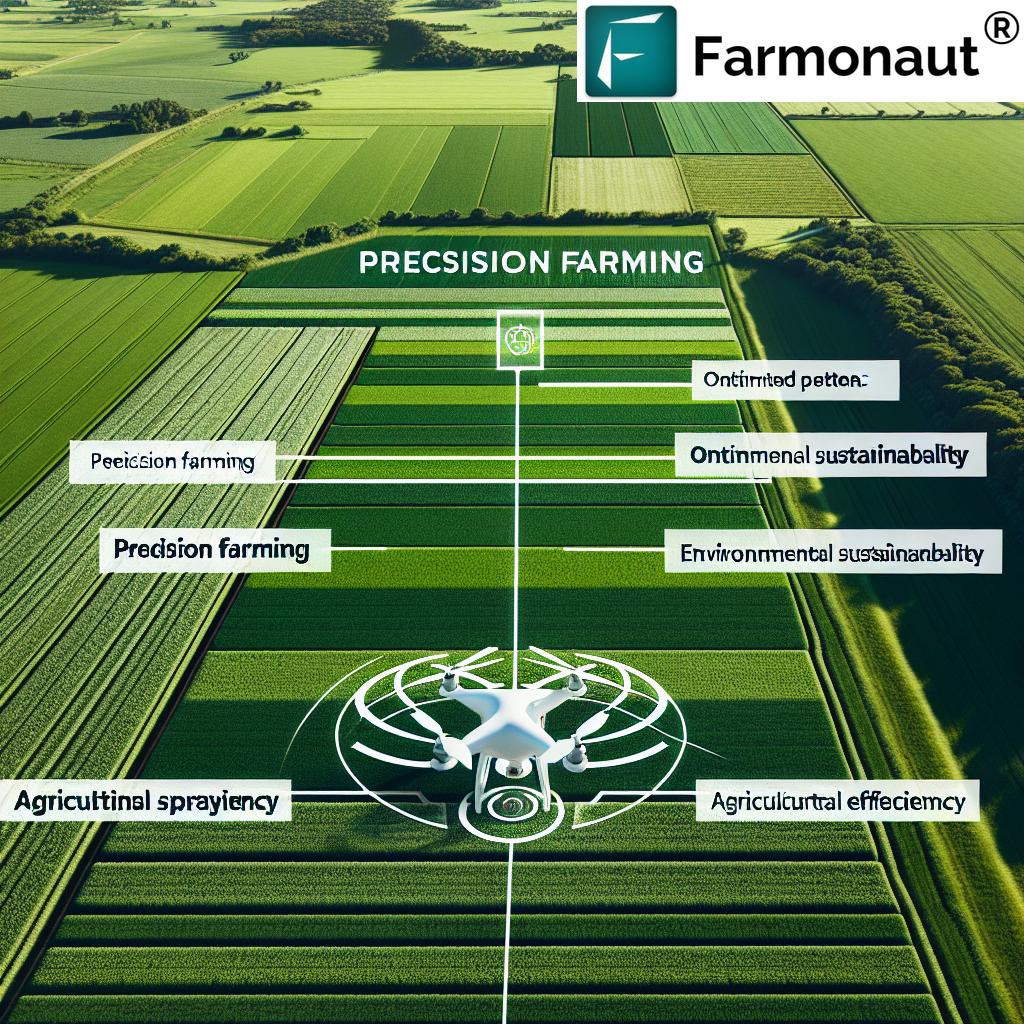Sector-Specific Impact: Trump Tariffs on US Industries 2025
“In 2025, US manufacturing faces up to 15% cost increases due to new tariffs on Chinese imports.”
Introduction: Understanding the Sector-Specific Impact of Trump Tariffs in 2025
The sector-specific analysis of the US economy affected by Trump tariffs on Mexico and China (manufacturing, agriculture, tech) emerges as one of the most critical conversations in 2025. The imposition of tariffs under the Trump administration—specifically, the 25% tariffs on Mexico and 10% tariffs on China—fundamentally altered the competitive and economic landscape across various sectors of the US economy.
These tariffs, targeting both raw materials and finished goods, were aimed at correcting perceived trade imbalances, protecting domestic industries, and responding to unfair trade practices. Yet their effects on specific industries like agriculture and manufacturing, as well as technology, have proven far-reaching and deeply nuanced.
In this comprehensive exploration, we offer a sector-specific economic impact analysis of Trump tariffs on US manufacturing, agriculture, and tech industries, drawing on the latest 2025 data and trends. We’ll illustrate how core sectors—agriculture, manufacturing, and technology—have faced economic shifts, strategic realignments, and evolving global competition as a result of trade policies initiated during the Trump presidency.
Summary: Sector-Specific Economic Impact Analysis in 2025
The sector-specific economic impact of 25% tariffs on Mexico and 10% tariffs on China (manufacturing, agriculture, technology) is marked by increased input costs, disrupted supply chains, volatile export markets, and rapid innovation in some industries. This blog delivers sectoral analysis of these outcomes—including cross-sectional job market dynamics—in the context of 2025 and beyond, spotlighting the ongoing adaptation and resilience strategies across US industries.
Furthermore, we highlight how modern platforms like Farmonaut are empowering agriculture to navigate these changing realities through advanced, satellite-based solutions.
“Agricultural exports to Mexico could drop by 12% as sector-specific tariffs reshape US trade flows.”
Quick Reference: Sectoral Impact Comparison Table (2025)
| Industry | Average Tariff Rate (%) | Estimated Cost Increase (%) | Import Volume Change (%) | Export Volume Change (%) | Projected Market Share Loss (%) | Example Affected Products |
|---|---|---|---|---|---|---|
| Manufacturing | 20 (Steel/Aluminum/Auto: 25) | 10–15 | -12 | -8 | 5–10 | Automotive parts, Steel, Electronics |
| Agriculture | 8–20 (avg.) | 8–12 | -10 | -12 | 6 | Soybeans, Corn, Dairy, Pork |
| Technology | 10 (Components: up to 15) | 7–10 | -9 | -7 | 4–8 | Semiconductors, Rare earths, Consumer electronics |
Overview of Trump Tariffs on Mexico and China: Sectoral Impact Analysis
During the Trump presidency, American trade policy underwent a significant shift—notably through the imposition of sector-specific tariffs on imports from Mexico and China. The rationale was correcting perceived imbalances, strengthening domestic industries, and challenging Chinese and Mexican trade practices.
- Mexico became subject to 25% tariffs on industrial inputs and key agricultural goods—including steel, aluminum, and automotive parts.
- China saw a 10% general tariff rate on a broad range of consumer goods, electronics components, and machinery.
These sectoral measures triggered both immediate and long-term economic consequences across the US.
- In agriculture, retaliation from trading partners led to declines in exports, shifting supply chains, and reduced market access.
- In manufacturing, higher input costs and supply chain disruptions affected competitiveness and job markets.
- The technology sector faced component price pressures but responded with innovation, supply chain adaptation, and increased domestic investment.
Let’s now analyze these impacts across key sectors in detail, integrating 2025 data, sector-specific outcomes, and emerging trends.
Watch: China Tariffs 2025 – 7 Shocking Impacts on Oakland Chinatown Markets & Restaurants
Agriculture Sector: In-Depth Sector-Specific Analysis of US Economy Affected by Trump Tariffs on Mexico and China
Sector-Specific Economic Impact of 25% Tariffs on Mexico and 10% Tariffs on China (Agriculture)
The agriculture sector stands as one of the most deeply impacted industries due to tariffs during and after the Trump administration. The US, Mexico, and China represent complex, interdependent agricultural trade partners—any major trade shift has global consequences.
- Mexico: As the third-largest export market for US agriculture, Mexico responded to sectoral tariffs by imposing their own countermeasures and seeking alternate suppliers—directly impacting US corn, soybeans, and dairy exports.
- China: China’s retaliatory tariffs targeted soybeans, pork, and tree nuts. By 2025, US soybean exports to China are down significantly vs 2017-18 levels, burdening Midwest farmers, leading to volatility, and spurring crop diversification.
Key effects include:
- Price Volatility:
Unpredictable export access led to domestic oversupplies of soybeans and lower farm-gate prices. Farmers shifted away from soybeans/exports to more stable or alternative crops. - Farm Consolidation:
Small and mid-size operations, hit by falling prices and rising input costs, faced liquidity pressures, leading to greater farm consolidation in the sector. Larger, capitalized farms absorbed smaller ones. - Accelerated Tech Adoption:
Many farmers, under economic pressure, invested in advanced resource management and crop monitoring tools for cost optimization. Farmonaut offers large-scale farm management and carbon footprinting solutions that are increasingly vital for adapting to volatility.
Carbon Footprinting for Farms & Agribusiness helps measure, monitor, and reduce environmental impact, positioning growers for regulatory compliance and market differentiation.

Access Farmonaut Web App: Real-Time Crop Health, AI-Driven Advisory, and More - Higher Input Costs:
Machinery, fertilizers, and ag-tech—often dependent on tariffed components from Mexico and China—became more expensive. This further eroded margins, particularly for small farms with limited capital. - Export Market Losses:
By 2025, agriculture exports to Mexico dropped by an estimated 12% as competitors (Brazil, Argentina, EU) filled vacuums left by US trade disruptions.
Illustrative Impact:
Midwest soybean farmers have diversified toward grains and specialty crops to counteract lost China demand, leveraging innovative agri-tech platforms like Farmonaut to optimize decisions under turbulent commodity cycles.
Watch: Kentucky Corn & Soy 2025 ?️ 7 Ways Floods + China Trade Hit Yields—Farmonaut Solutions Inside
Farmers’ Responses and Innovations
- Embracing data-driven decision-making via satellite imagery and AI-based advisory systems—Farmonaut is a leading provider in this arena, helping to maximize yield while minimizing wasted spending on inputs.
- Expanding into blockchain-based product traceability to assure food supply chain integrity and meet rising domestic/export consumer transparency demands.
For financial risk mitigation, farmers are using innovative crop loan & insurance platforms powered by satellite verification, expediting claims and lowering costs—a crucial adaptation in a more volatile market.
Watch: Canola Crisis 2025 | China 100 % Tariffs, Price Volatility & AI Precision Ag Saving SK Farms
Manufacturing Sector: Sector-Specific Economic Impact of 25% Tariffs on Mexico and 10% Tariffs on China (Manufacturing)
Immediate Cost Increases, Supply Chain Disruptions, and Market Realignments
The manufacturing sector was hit on two fronts:
– Tariffs directly increased the price of imported components and industrial inputs (notably steel, aluminum, automotive parts, and electronics from Mexico and China).
– Retaliatory duties and supply chain disruptions made US exports less competitive globally.
-
Automotive and Heavy Machinery:
US automakers and machinery manufacturers relying heavily on Mexican supply chains experienced up to 15% cost increases. This prompted a scramble for alternative sourcing, increased regional integration, and greater investment in North American suppliers over 2020–2025. -
Steel and Aluminum:
25% tariffs on Mexican metals led to modest domestic production upticks, but also raised costs for downstream industries—stifling broader competitiveness and investment recovery in manufacturing sub-sectors. -
Electronics:
10% tariffs on electronics and components from China squeezed margins for US manufacturers in appliances, communications, and computing, while driving prices higher for end-users.
Watch: Tariffs Rock Thief River Falls 2025 ⚙️ 7 Supply-Chain Shifts for Rural Tech Warehouses
Supply Chain Reconfiguration Strategies (2025)
- Diversification: Manufacturers adapted supply chains by multi-sourcing components, investing in advanced analytics to forecast disruptions and negotiating regional trade agreements for critical imports.
- Reshoring and Automation: Some firms reshored select production to the US for tariff avoidance but offset increased labor costs via automation and robotics. Growth in robotics-integrated fields—like electronics assembly and automotive subcomponents—has outpaced job creation in traditional manufacturing roles.
- Fleet Management Tools: Efficient production now relies on advanced fleet management, which digitizes and optimizes logistics—minimizing transportation costs, maximizing asset utilization, and mitigating tariff-driven disruptions.
Job Market & Employment Effects
The job market analysis in manufacturing vs agriculture sectors post-tariffs paints a mixed picture in manufacturing:
– Steel and aluminum jobs saw modest recovery in core producing regions.
– Broader manufacturing employment stagnated or declined due to higher input costs, weaker export competitiveness, and increased automation. By 2025, many new positions are concentrated in high-skill, high-tech fields rather than mass production lines.
Watch: Mexico Vacuum-Dried Fruit Boom 2025 | 120 kW REV Tech, 7× Faster, 98% Nutrient Retention
Technology Sector: Sector-Specific Economic Impact of 25% Tariffs on Mexico and 10% Tariffs on China (Technology)
Tariff Exposure, Strategic Shifts, and Ongoing Adaptation
The technology industry was less directly affected on finished consumer products, but the sector-specific analysis of US economy affected by Trump tariffs on Mexico and China reveals major challenges for component imports—notably semiconductors, rare earth minerals, and electronics subcomponents.
- Semiconductor and Component Tariffs: Extensive 10% tariffs on Chinese electronics and rare earths raised costs for hardware manufacturers and limited access to critical advanced technology inputs.
- Global Supply Chain Diversification: Tech giants accelerated diversification away from China—shifting assembly lines and sourcing to Vietnam, India, and Mexico to lower exposure to future trade tensions.
- Investment in Domestic Capabilities: The drive for US-based semiconductor manufacturing saw renewed momentum, supported by government incentives and national security concerns. By 2025, advanced chip fabrication capacity in the US has grown but at high capital cost.
Innovation and Competitiveness
- R&D and Product Redesign: To offset tariff pressures, tech companies increased R&D spend, explored vertical integration, and designed hardware with alternative, less-tariff-prone components.
- Consumer Electronics Pricing: There’s a modest inflation in prices for laptops, tablets, and mobile devices, as some costs are absorbed by consumers. Brands that managed to diversify quickly are less exposed but face higher operating complexity.
- Blockchain and Traceability: Market demand for blockchain-based product traceability continues to increase in tech and agrifood, supporting both supply chain transparency and resilience.
Watch: Rare Earth Boom 2025 ? AI, Satellites & Metagenomics Redefine Canadian Critical Minerals
Integrated Ripple Effects Across Sectors: Chain Reactions, Strategic Reconfiguration & Market Realignments
The sectoral impacts of Trump-era tariffs were not isolated. Instead, they created a web of cross-sector ripple effects as changes in one industry led to consequences in many others.
- Cost Creep Across Chains: Steel tariffs raised manufacturing costs, which in turn inflated the price of new agricultural equipment—limiting smaller farms’ ability to invest in modernization and technology.
- Supply Chain Reconfiguration: Both the manufacturing and tech industries accelerated the reconfiguration of their sourcing and logistics chains—driving increased adoption of digital solutions, advanced logistics platforms, and fleet management systems for efficient import/export flows.
- Trade Relationships Realignment: By 2025, the US has solidified some nearshoring efforts (Mexico, Canada) and diversified supply chain dependencies away from China. However, the costs of realignment are still being absorbed—US exporters face an uphill battle to regain lost global markets.
Job Market Analysis in Manufacturing vs Agriculture Sectors Post-Tariffs
Sector-Specific Trends, Challenges, and Employment Outcomes
The labor and employment implications of sector-specific tariffs are among the most important—and often most hotly debated—outcomes of the 2020s’ policy era. Let’s break down trends by sector:
-
Manufacturing:
– Job growth in protected industries (e.g., steel, aluminum) saw a modest uptick, but broader manufacturing employment gains were offset by automation, reconfiguration of supply chains, and loss of export competitiveness.
– Automation-driven bifurcation: Skew toward higher-skill manufacturing roles (robotic assembly, digital diagnostics) rather than labor-intensive mass production.
– Regional job volatility seen in the Rust Belt and industrial South, with some new investment but significant churn in the workforce. -
Agriculture:
– Farm employment declined due to consolidation and mechanization. Economic pressures from lost exports, reduced market access, and higher input costs put a premium on scale, squeezing out smaller farm operators.
– Labor market tightness: Greater demand for skilled agri-tech workers, seasonal labor uncertainty due to immigration and trade shifts.
– Ag-Tech Resilience: Greater adoption of AI-driven, satellite-powered farm management tools (like Farmonaut) is critical for resilience and efficient resource use in a disrupted market.
Watch: Nigeria Non-Oil Export Boom 2025 ? 4,600 Hybrid Seedlings, NEPC & AfCFTA AgriTech Rise
Policy Implications and 2025 Outlook
As of 2025, the legacy of Trump tariffs on US industries is both cautionary and clarifying. The experience highlights the challenges of deploying protectionist policy tools in a deeply globalized economy.
- Nuanced Outcomes: While core objectives—like reviving select manufacturing sectors—yielded modest domestic gains, ripple effects on input costs, market access, and employment counterbalanced these wins.
- Competitiveness and Innovation: The uneven sectoral impacts underscore the need for integrated trade, innovation, and workforce policy—balancing protection with incentives for advanced production, sustainability, and upskilling.
- Role of Technology and Agri-Tech: Companies like Farmonaut are critical as enablers—reducing cost barriers and promoting real-time, data-driven adaptation for exposed sectors before, during, and after trade shocks.
As global competition and market forces continue evolving, ongoing investment in technology, sustainability, and cross-sector coordination offers the clearest path for long-term resilience.
Watch: Tariffs Rock Thief River Falls 2025 ⚙️ 7 Supply-Chain Shifts for Rural Tech Warehouses
How Farmonaut Supports Agricultural Adaptation and Resilience
Farmonaut is dedicated to bridging the gap between traditional practices and advanced, technology-driven precision agriculture. During trade turbulence and supply chain volatility, our platform empowers farms, cooperatives, agribusinesses, and policymakers with:
- Satellite-based crop health monitoring (NDVI, soil moisture, pest stress)—enables timely intervention and resource-efficient production regardless of market instability.
- Jeevn AI advisory system—delivers up-to-the-minute recommendations for crop management, input timing, and weather adaptation.
- Blockchain-powered traceability—promotes transparency in agricultural supply chains, crucial for accessing discerning export markets and building brand trust. Learn more about product traceability.
- Carbon footprinting tools—track resource efficiency and sustainability, positioning producers for compliance and market leadership.
- Fleet and resource management—helps agribusinesses trim logistics costs and maximize machinery ROI in a market pressured by tariffs.
- Developer-friendly APIs—enable agritech integrators and researchers to embed Farmonaut’s satellite and weather data directly into their own applications and workflows. Read the Farmonaut API Developer Docs for more.
Farmonaut’s approach democratizes precision agriculture, empowering every scale of operation with actionable insights, sustainability, and competitive, data-driven adaptation—crucial in a world where tariff policy, trade volatility, and global competition are the norm rather than the exception.
Explore Farmonaut’s Large-Scale Farm Management Platform– optimize your entire farming operation with real-time geospatial insights, input tracking, and collaborative workflow tools.
FAQ: Sector-Specific Economic Impact of Trump Tariffs on US Industries (2025)
- Q1: What was the primary sector-specific intention behind Trump tariffs on Mexico and China?
- A: The main goals were protecting domestic industries, correcting perceived trade imbalances, and addressing unfair trade practices (such as intellectual property theft and industrial subsidies), especially in manufacturing, agriculture, and technology sectors.
- Q2: How did tariffs affect agricultural exports in 2025?
- A: US agricultural exports to Mexico dropped by an estimated 12% due to Mexican counter-tariffs and shifting supply chain relationships. China’s retaliations led to lasting declines in soybean, pork, and specialty crop exports, forcing US farmers to diversify and invest in advanced farm management.
- Q3: Why did manufacturing costs increase after tariffs?
- A: Tariffs on imported steel, aluminum, automotive parts, and electronics from Mexico and China raised input costs for US manufacturers by up to 15% in certain subsectors, disrupting just-in-time supply chains and impacting overall competitiveness.
- Q4: What impact did tariffs have on the technology industry?
- A: Most directly, tariffs on Chinese electronics and rare earth components increased costs for US hardware manufacturers and consumer electronics brands. This led companies to reformulate global supply chains and invest heavily in domestic semiconductor manufacturing and R&D for product redesign.
- Q5: How did employment trends shift in manufacturing and agriculture post-tariffs?
- A: Manufacturing saw a modest rise in jobs in protected subsectors (mainly steel/aluminum) but overall job growth stalled due to automation and supply chain reconfiguration. Agriculture employment declined as farm consolidation and mechanization accelerated, with a greater reliance on advanced agri-tech platforms.
- Q6: What tools can help US agricultural producers remain competitive in a volatile trade environment?
- A: Platforms like Farmonaut offer essential solutions: carbon footprint tracking, blockchain traceability, and AI-powered farm management. These tools empower producers to manage costs, make data-driven choices, and build market trust.
Conclusion: Nuanced Analysis for a Complex Era
The sector-specific analysis of the US economy affected by Trump tariffs on Mexico and China in 2025 reveals a complex mosaic of disruption, adaptation, and innovation. While intended to safeguard domestic employment and restore competitiveness, tariff policies generated both beneficiaries and losers in manufacturing, agriculture, and technology sectors—often with unintended ripple effects.
- Agriculture faced export declines, increased input costs, and a wave of structural change—necessitating innovation, consolidation, and technology adoption.
- Manufacturing experienced cost pressures, supply chain transformation, and a dual movement toward automation and regionalization—reshaping the labor market and industrial base.
- Technology adapted to component price increases with swift supply chain realignment and a renewed focus on domestic capabilities, R&D, and consumer transparency.
New realities in policy, economics, and global market competition demand continuing investment in innovation, precision management, and workforce upskilling. As a transformative agri-tech platform, Farmonaut stands as a vital partner for producers, businesses, and stakeholders seeking to thrive in a world defined by change, complexity, and opportunity.











